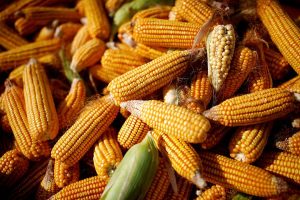Tech upgrades seen required to close 40% yellow corn supply-demand gap

THE yellow corn industry is in need of technology upgrades in order to bridge the supply-demand gap, according to a roadmap for the industry issued by the Department of Agriculture (DA).
“Bridging the current 40% supply gap will need yield-increasing technologies particularly among small growers, adequate post harvest machinery and facilities, streamlined marketing systems, enhanced support services, and enabling policy environment,” according to the plan.
Yellow corn is mainly used for animal feed, and has a follow-on effect on meat and poultry prices if corn is expensive.
“The domestic corn sector has grown four-fold since the mid-1990s serving the markets for feed, food, other industries, as well as home consumption. In 2020, the country achieved only 57% sufficiency in yellow corn for feed use; thus, is a net importer of yellow corn, feed wheat, and soya meal from Indonesia, Myanmar, the United States, and Ukraine, among others,” according to the report.
To increase the harvest, the DA said the government must invest in technology upgrades, postharvest infrastructure and information and R&D support systems. It must also intervene to head off market inefficiencies in the corn market.
The roadmap contemplates the expansion of corn farming in Cagayan, Isabela, Tarlac, Quezon, Rizal, Occidental Mindoro, Zamboanga Sibugay, Misamis Oriental, Sarangani and Agusan del Sur.
According to the report, corn is the number two Philippine staple and accounts for 9.67% of the land planted to crops.
“It is widely grown by small farmers in resource-poor environments; thus, contributing to food and nutrient security, and (is critical for) community resilience. With such significance and value to offer to the country, the corn sector remains a strategic commodity that requires a detailed roadmap and plan to fully realize the potential benefits the sector has to offer,” the DA said.
Former Agriculture Secretary William D. Dar said policymakers must consider the forces driving performance in the corn industry.
“The corn industry has been challenged not only by natural causes but by a host of factors such as low farm technology adoption, poor or absence of mechanization and postharvest facilities, failings in market and support services, and inadequacies in governance,” he added. — Luisa Maria Jacinta C. Jocson




